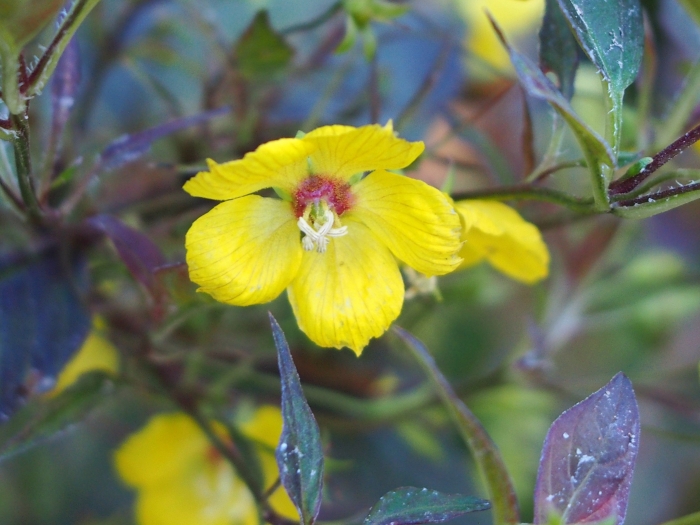Fringed Loosestrife
(Lysimachia ciliata)
Fringed Loosestrife (Lysimachia ciliata)
/
/

Agnieszka Kwiecień, Nova
CC BY-SA 4.0










































































Estimated Native Range
Summary
Fringed Loosestrife is appreciated for its vibrant yellow flowers and ability to attract beneficial insects. It is used in naturalistic plantings, rain gardens, and as a border plant in gardens that can accommodate its spreading habit. While it can be aggressive, it is also easily managed by removing new suckers. It thrives in full sun to part shade and prefers consistently moist soil with slow to medium drainage. It is not drought-tolerant and will require additional watering during dry periods. There are no major disease problems, but it can become invasive if not managed properly in a garden setting.CC BY-SA 4.0
Plant Description
- Plant Type: Herb
- Height: 2-3 feet
- Width: 2-3 feet
- Growth Rate: Rapid
- Flower Color: Yellow
- Flowering Season: Summer, Fall
- Leaf Retention: Deciduous
Growth Requirements
- Sun: Full Sun, Part Shade
- Water: Medium, High
- Drainage: Medium, Slow
Common Uses
Bank Stabilization, Bee Garden, Bird Garden, Butterfly Garden, Deer Resistant, Drought Tolerant, Groundcover, Hummingbird Garden, Low Maintenance, Rabbit Resistant, Water Garden
Natural Habitat
native to moist meadows, stream banks, and damp woodlands in North America, including most of southern Canada and most of the United States
Other Names
Common Names: Fringed Yellow-Loosestrife
Scientific Names: Lysimachia ciliata , Steironema ciliatum , Steironema ciliata , Steironema ciliatum var. occidentale , Lysimachia grandiflora , Lysimachia longipedicellata , Steironema longipedicellatum , Steironema pumilum , Steironema pumilum var. longipedicellatum , Lysimachia greeneana
GBIF Accepted Name: Lysimachia ciliata L.